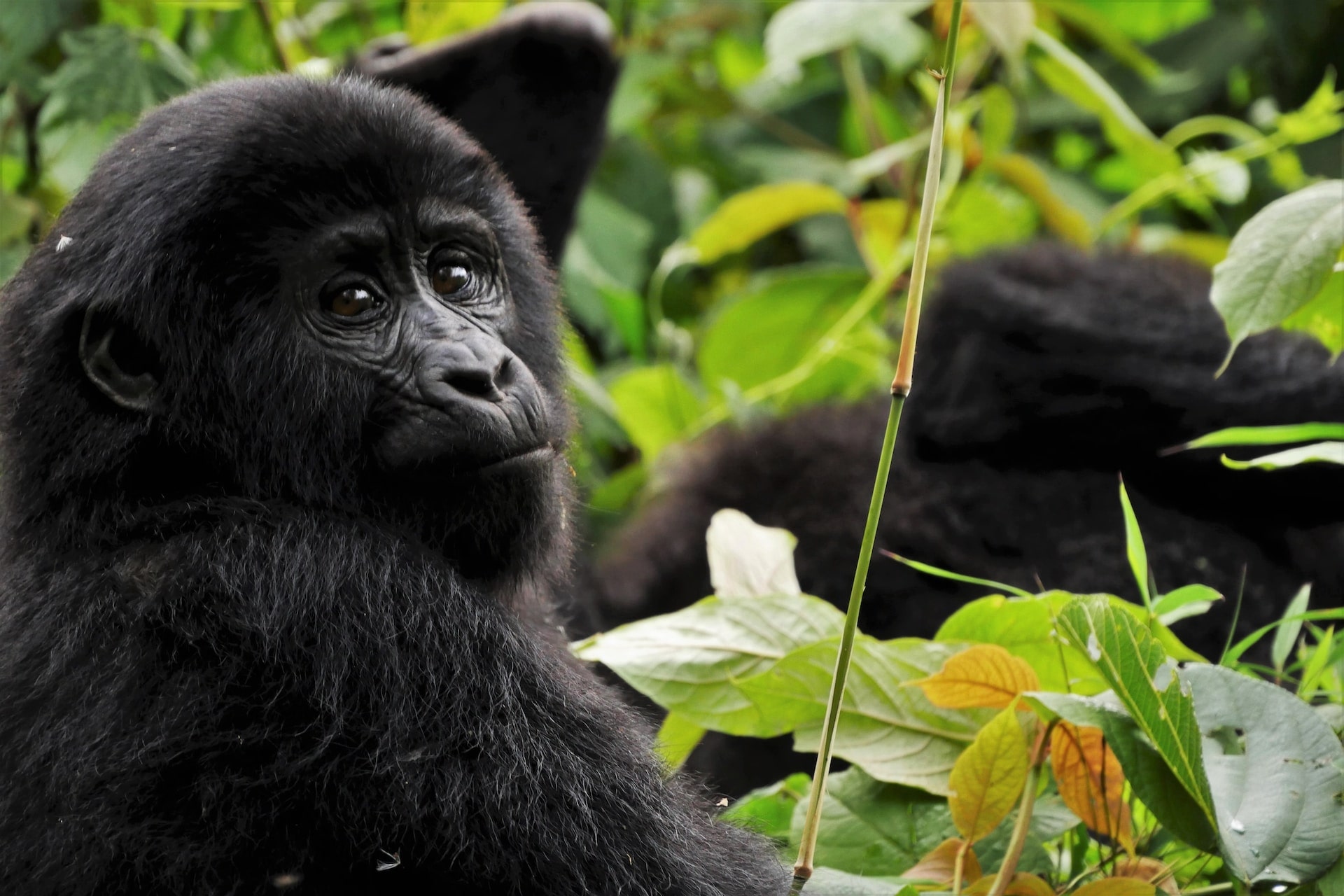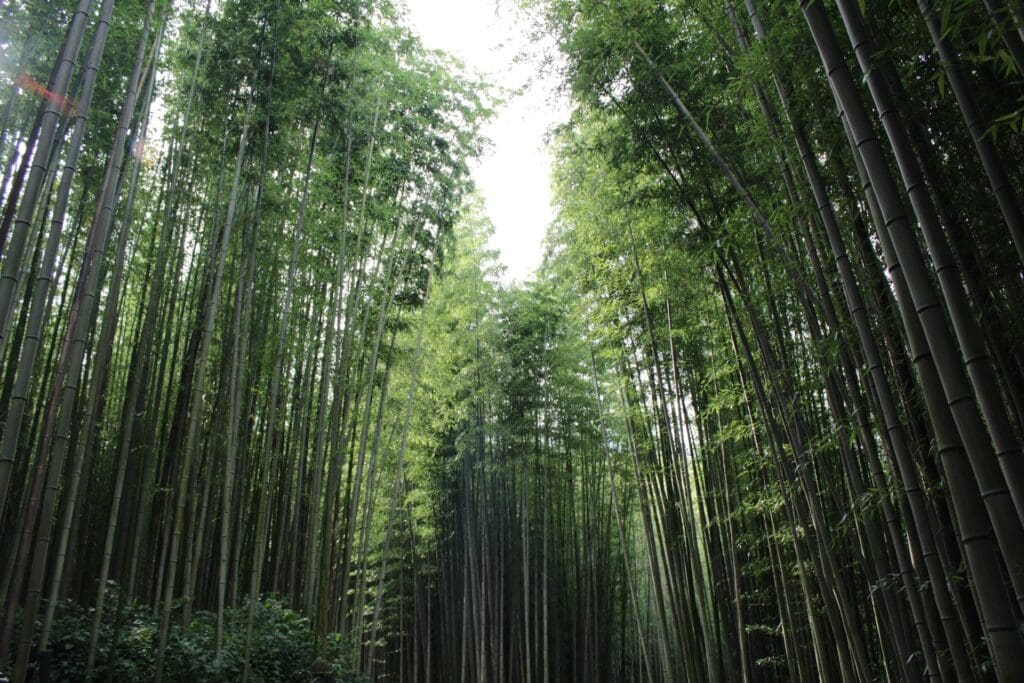Introduction
Bamboo forests are iconic landscapes found across the tropics and subtropics that play a vital ecological role through their rapid growth and resilience. For centuries, extensive groves of bamboo have blanketed mountain slopes and valley floors in Asia, Africa, and the Americas. These versatile plants provide raw materials, food, and income for local communities. Bamboo forests also house endangered wildlife and furnish critical ecosystems services that support soil health, water cycles and climate stability.
However, in recent decades, pristine bamboo habitat has come under escalating threat due to agricultural expansion, logging, infrastructure development and unsustainable harvesting practices. Additional pressures from invasive pests and climate change bring further risks to bamboo forest ecosystems. Across significant portions of their native range, bamboo areas are declining and threatened. This raises an urgent question – are bamboo forests becoming endangered globally?
Getting to the bottom of this issue requires analyzing the role of bamboo forests for local communities and wildlife, emerging threats to their survival, and the real-world impacts of declining bamboo habitat. It also necessitates examining nuanced factors that anchor the resilience of bamboo ecosystems, even under increasing human pressures. With a grasp of these dynamics, we can gauge the feasibility and priority of conservation efforts to ensure bamboo forests endure into the future.
The Vital Ecological Role of Bamboo Forests
Bamboo encompasses over 1,000 recognized species adapted to diverse habitats, from lush tropical rainforests to exposed mountainsides. As one of the fastest growing plants globally, bamboo forms dense groves that play a vital ecological role. Once established, bamboo stalks can surge over 3 feet higher in just a single day. This rapid vertical growth allows bamboo to regenerate quickly after clearing, preventing extensive soil erosion. Bamboo also forms mesh-like root networks that stabilize slopes against landslides.
In addition, bamboo stems and leaves efficiently cycle nutrients as they shed and regrow each year. The plant contributes significant biomass and soil organic matter to forest ecosystems annually. Bamboo leaves shed regularly to form a thick mulch layer that conserves moisture and suppresses competing understory plants. By crowding out grasses, bamboo reduces the fuel load for out of control forest fires in some regions.

Bamboo forests also provide prime habitat for endangered wildlife such as giant pandas in China that depend almost exclusively on bamboo for sustenance. The red panda similarly relies on bamboo forests for its survival. Gorillas, lemurs, and chimpanzees in Africa also depend on seasonal bamboo shoots as a critical food source. Birds like the endangered Madagascar ground-roller nest and feed exclusively in bamboo stands. Beyond mammals and birds, insects like bamboo borer beetles form part of complex food chains specific to bamboo forest ecosystems.
In addition to wildlife habitat, bamboo forests provide raw materials and income for local communities across the tropics. Rural villages construct homes, furniture, household items, fences, and agricultural tools from versatile bamboo stems. Bamboo shoots are also harvested as a nutritious food source in many regions of Asia and Africa. With adequate sustainable management, bamboo can be selectively harvested each year as a renewable resource to support local livelihoods.
At a national level, bamboo can drive green development as a sustainable raw material for constructing homes, furniture, and paper products. Bamboo pulp can substitute for timber in manufacturing paper, reducing pressure on native forests. With its rapid growth and ability to regenerate after harvest, bamboo can be an ideal crop to alleviate poverty in rural communities when responsibly managed.
Emerging Threats to Bamboo Forests
However, despite bamboo’s strong regenerative capacities as a forest species, escalating human pressures over the past century have threatened the survival of bamboo ecosystems across significant parts of the tropics. Extensive areas of bamboo forests have already disappeared or become fragmented due to direct human destruction and indirect pressures like invasive pests and climate change.



A century ago, lush bamboo could be found dominating entire landscapes, blanketing mountainsides and lowland areas in unbroken continuity. But today only scattered fragments cling to existence across much of bamboo’s former range. According to UN FAO estimates, bamboo forest coverage worldwide plunged from over 31 million hectares in the late 1800s to just 14 million hectares by the end of the 20th century. A bamboo habitat decline exceeding 50% indicates most regions are at risk of complete forest elimination.
In Asia, the bamboo forests that harbor China’s iconic giant pandas have been decimated over the past century, with China alone losing over half its original bamboo forest cover. South and Southeast Asia have suffered similar losses as bamboo areas are progressively cleared and fragmented to make way for farms, plantations and development projects. In Madagascar, scientists estimate 90% of natural bamboo groves have been cleared since the 1950s. Similar habitat loss has been documented in the bamboo regions of Brazil and other South American countries. Even Africa has lost an estimated 20% of original dense bamboo thickets over the past 30 years.
This rampant deforestation has pushed numerous bamboo dependent species such as pandas and lemurs to the brink of extinction. Many surviving mammal and bird populations now face starvation risks from dwindling bamboo forage areas. Indigenous communities are also deprived of traditional bamboo forest resources.
Several key factors drive the precipitous endangerment of bamboo ecosystems globally:
-
Agricultural Expansion: As rural populations grow, subsistence farmers target bamboo areas to clear new agricultural fields. Valuable timber species like mahogany are also logged within bamboo forests.
-
Infrastructure Development: Dams, roads, mining, and urbanization carve up intact bamboo habitat. Poachers penetrate remote bamboo forests using logging roads and infrastructure.
-
Invasive Species: Without natural predators, fast-growing exotic bamboos outcompete native varieties. Grazing animals like goats inhibit bamboo regrowth. Insects and pathogens can proliferate in degraded forests.
-
Climate Change: More extreme droughts, storms, and erratic rainfall disrupt bamboo’s sensitive regeneration cycles. Pest outbreaks and sudden forest die-offs may exceed bamboo’s resilience thresholds.
-
Over-Harvesting: Unchecked annual extraction of bamboo stems for timber and pulp prevents successful regrowth in many groves. Lack of harvesting oversight and rotation contributes to losses.
This combination of escalating threats poses a high risk that most remaining bamboo ecosystems will face collapse or complete disappearance in coming decades, unless current exploitation practices shift to sustainable models. While bamboo itself is resilient, bamboo forests are not indestructible in the face of unrelenting human pressures and climate stress. Preservation will require proactive human intervention on a massive scale.
The Significant Impacts of Bamboo Forest Declines
The rapid decline and fragmentation of bamboo forests documented over the past century carries stark ecological and socioeconomic consequences for human communities and biodiversity worldwide. As specialized bamboo ecosystems disappear, numerous species face extinction. At the same time, rural communities lose critical natural resources, while climate stability suffers from carbon and ecosystem service losses.
Risks to Bamboo-Dependent Wildlife
The decline of bamboo forests directly threatens numerous specialized wildlife species that depend on bamboo for their survival. Giant pandas are the most recognized victims of bamboo habitat destruction in China. But red pandas, bamboo lemurs, and a myriad of birds and insects also rely exclusively on intact bamboo forests to persist.



As natural bamboo areas are progressively cleared across Asia, Africa, and the Americas, endemic wildlife that coevolved with bamboo over millennia are pushed to the brink of extinction. Even adaptable generalist animals that supplement bamboo with other forage face increased risks from starvation, conflict with humans, and road accidents as they are forced to wander outside of protected reserves in search of food.
Beyond mammals and birds, the unique assemblages of insects, spiders, and fungi adapted to bamboo forests also face decimation as their niche ecosystems disappear. For example, destruction of Madagascar’s bamboo forests threatens delicate insect species like the bamboo weevil and ground beetle that are found nowhere else on Earth. The irreversible global extinction of these highly specialized bamboo forest species results in an overall degradation of biodiversity.
Climate Change and Socioeconomic Consequences
In addition to eliminating unique biodiversity, ongoing destruction of bamboo forests worsens climate change by releasing substantial carbon stores accumulated in bamboo biomass and soils. Bamboo is highly effective at sequestering atmospheric carbon into living and dead plant tissues through its rapid growth. Intact bamboo forests account for an estimated 2.5% of global forests’ total carbon storage.
Converting these ecosystems to agricultural fields, pastures, and plantations releases much of this carbon as greenhouse gases. Preventing further loss and fragmentation of bamboo habitats provides an opportunity to conserve these significant carbon sinks. Expanding bamboo forest preserves also represents a nature-based climate solution.
At a local level, rural communities suffer from the disappearance of bamboo forests they rely on for essential natural resources. With access to bamboo stems, village artisans can construct furniture, flooring, household items, fences, and agricultural tools using their traditional weaving and working skills. Selectively harvested bamboo shoots provide nutrition and income from sales at local markets.
As bamboo groves vanish, communities become dependent on more expensive imported alternatives like wood, cement or brick for construction. Some must walk longer distances each day as nearby bamboo stands disappear, or risk fines and conflict with authorities harvesting bamboo illegally inside protected parks. At a national level, the loss of bamboo forests curtails green industries based on versatile bamboo pulp, shoots, and stems.
In addition, the loss of bamboo vegetation on deforested slopes leads to increased landslide risks, soil erosion, and river sedimentation that threaten villages downstream. Strategically planted bands of bamboo have traditionally protected rural communities by stabilizing soils and regulating water runoff during heavy rains. But this natural safety net is lost when slopes are stripped bare.
Conservation Efforts: Progress and Challenges
In recognition of the vital value of bamboo ecosystems for biodiversity, livelihoods, and ecological services, several conservation initiatives have taken shape over recent decades. While these efforts have seen measured success in particular locations, they have so far proven insufficient to halt bamboo forest declines at a global scale. Major gaps persist in enforcement, habitat connectivity, local rights, and funding.
Protected Areas and Sustainable Harvesting Initiatives
A centerpiece of bamboo conservation has focused on establishing protected natural reserves and national parks to set aside critical habitat areas. China now has over 50 panda reserves covering nearly 5,000 square miles of designated giant panda habitat. While panda populations have rebounded from around 1,000 to nearly 2,000 since the 1980s, issues of habitat fragmentation and isolation between reserves continues to threaten long-term recovery.
Madagascar likewise has extensive national parks system that includes fragmented pockets of remaining natural bamboo forest. But underfunded enforcement still allows illegal slash-and-burn agriculture to gradually eat away at nominally protected bamboo areas. Other countries like Brazil, Ecuador, and Colombia have also carved out national and local parks to conserve bamboo ecosystems. But as with other forest habitats, reserves only cover a fraction of bamboo’s historical range.



Beyond parks and protected areas, organizations like the International Network for Bamboo and Rattan (INBAR) promote sustainable harvesting techniques and policy reform. By substituting selective thinning for clear-cutting of bamboo groves, implementing rotational harvest periods, and limiting mechanized extraction, productivity can be sustained over the long term.
However, adoption of sustainable harvesting practices remains limited due to policy barriers, lack of land tenure rights, and economic incentives that favor faster unsustainable exploitation. Rural populations struggling to meet basic needs justifiably prioritize short-term household benefits over maintaining bamboo ecosystem health. Realizing sustainability will require supportive government policies and genuine economic alternatives.
Empowering Local Stewardship
While international conservation NGOs can provide useful technical guidance, sustaining bamboo forests ultimately depends on empowering indigenous groups and local communities to take charge of managing their own forest resources. Where given secure rights over communally managed bamboo forests, indigenous groups have developed effective traditional systems of rotational harvesting and regeneration practices.
These groups carry generations of wisdom on how to maintain bamboo forest ecosystems rooted in their culture. But restrictive government policies often limit full community management. Outreach programs to raise awareness of bamboo ecology and engage villagers in monitoring forest health show promise in building commitment to conservation. Incentives like premiums for sustainably harvested bamboo could motivate preservation.
Overall, participatory forest management that devolves control to indigenous groups and local communities represents the most politically sustainable and economically just path to maintaining bamboo forests. But steep obstacles remain in converting state control to community stewardship.
Case Studies: China’s Giant Panda Habitat and Madagascar’s Bamboo Lemur Habitat
A close examination of two real-world case studies in bamboo forest conservation helps illustrate that recovery of these ecosystems is possible under certain conditions with adequate support and protection. But it also reveals how quickly bamboo forests can reach the breaking point when subjected to unrelenting human pressures and climate risks.
China’s Panda Reserves Show Recovery is Possible
In many ways, China’s extensive panda reserve system represents a model case of targeted conservation policy that has achieved measurable recovery of critically threatened bamboo forests. Recognizing habitat loss as the chief threat to their iconic panda bears, China has invested heavily in designating over 50 panda reserves spread across Sichuan, Shaanxi, and Gansu provinces.
These reserves focus on protecting remaining old growth bamboo forests that provide essential year-round food resources and shelter for pandas. China established its first panda reserves in the 1960s, but the protected habitat network expanded dramatically in the 1980s, 1990s, and 2000s as the scale of bamboo forest loss was recognized. Today, China’s panda reserves cover nearly 5,000 square miles of core habitat specially protected for panda conservation.
In addition to establishing protected areas, ranger forces actively patrol reserves to deter poaching and illegal timber harvesting. Isolated pockets of bamboo outside reserves are replanted to provide connectivity corridors that allow pandas to move between fragmented habitats. Selective bamboo harvesting by local villagers is permitted in buffer zones to support livelihoods and provide incentives for conservation.



Thanks to these strict protections and restoration efforts focused on bamboo forests, China’s population of wild giant pandas has rebounded significantly after decades of decline and now numbers nearly 2,000 mature individuals. While still endangered, habitat improvements enabled pandas to be downlisted from “endangered” to “vulnerable” status in 2016.
China’s panda reserve network offers hope that targeted protection and restoration of bamboo ecosystems can reverse species declines – if given sufficient political commitment and investment. However, persistent issues like human-wildlife conflict at reserve edges and vulnerabilities to climate change effects require ongoing vigilance to maintain recent gains.
Madagascar’s Bamboo Forests in Imminent Danger
In stark contrast to China’s success restoring panda habitat, the bamboo forests of Madagascar’s eastern lowlands represent an ecosystem in imminent danger of disappearing completely. Madagascar is home to extensive natural bamboo forests, ranging from dense lowland thickets to subalpine bamboo woodlands found at higher elevations.
These forests provide specialized habitat for numerous endangered lemurs such as the bamboo lemur, which feeds almost exclusively on bamboo. They also shelter the Madagascar ground-roller and other unique bird species that evolved to nest and feed within bamboo. However, due to unchecked slash-and-burn agriculture for rice and other crops, only an estimated 10% of Madagascar’s bamboo forests remain relatively intact.



Driven by extreme rural poverty and an expanding population, migrants move into increasingly marginal slopes and valleys to clear forest for subsistence agriculture. Lacking traditional taboos on destroying bamboo habitat, families burn whatever wild vegetation they can to eke out farming livelihoods. This has devastated lowland bamboo across entire regions, directly threatening the endemic wildlife species that depend on bamboo ecosystems.
Madagascar does boast an extensive national parks system that covers over 10% of the country’s land area. But understaffed authorities lack capacity to enforce protections in remote bamboo areas, where illegal clearing continues. While bamboo retains deep cultural and ecological value for some Malagasy ethnic groups, burgeoning pressures from impoverished migrants overwhelm conservation efforts.
International NGOs are attempting to promote bamboo farming as an alternative income source to dissuade uncontrolled slashing of natural groves. Building local appreciation of bamboo’s special ecological value is also vital for conservation. However, the window is rapidly closing to conserve Madagascar’s bamboo forests as rural populations are projected to double by 2050. Without aggressive efforts, Madagascar risks permanent biodiversity losses as unique lowland bamboo ecosystems pass their tipping point in coming decades.
Conclusion: Global Call to Action
Bamboo forests have furnished vital ecosystem services, raw materials and habitat across the tropics for millennia. But escalating human impacts now threaten to eliminate these iconic ecosystems over significant portions of bamboo’s native range. With so much bamboo forest already destroyed and fragmented, the need for expanded protections is urgent. However, past conservation efforts have proven insufficient to halt bamboo habitat declines globally.
Turning the tide will require proactively addressing bamboo forest endangerment as one of society’s pressing ecological crises. With vision and commitment, we can potentially strike a balance that allows bamboo utilization to continue, while preserving enough interconnected forest to sustain tropical biodiversity and ecological integrity. But action must be swift and resolute – we are swiftly running out of time.
Protecting bamboo forests for future generations remains one of the defining conservation challenges of this generation. Success rests on our ability to curb agricultural expansion and transition to responsible harvesting systems. It also depends on restoring degraded forests, connecting fragmented wild tracts, and empowering indigenous communities to manage local bamboo resources.
Above all, we must elevate global awareness of bamboo forests’ immense economic, cultural, and environmental value. Where these ecosystems are still largely intact, they should be safeguarded through any means necessary before losses become irreversible. Though remarkably resilient, bamboo forests cannot persist forever purely on their own in today’s world without bold human commitment. The window of opportunity is rapidly closing. But with vision and effort, a future where flourishing bamboo forests support thriving communities and endangered wildlife may still be possible.

